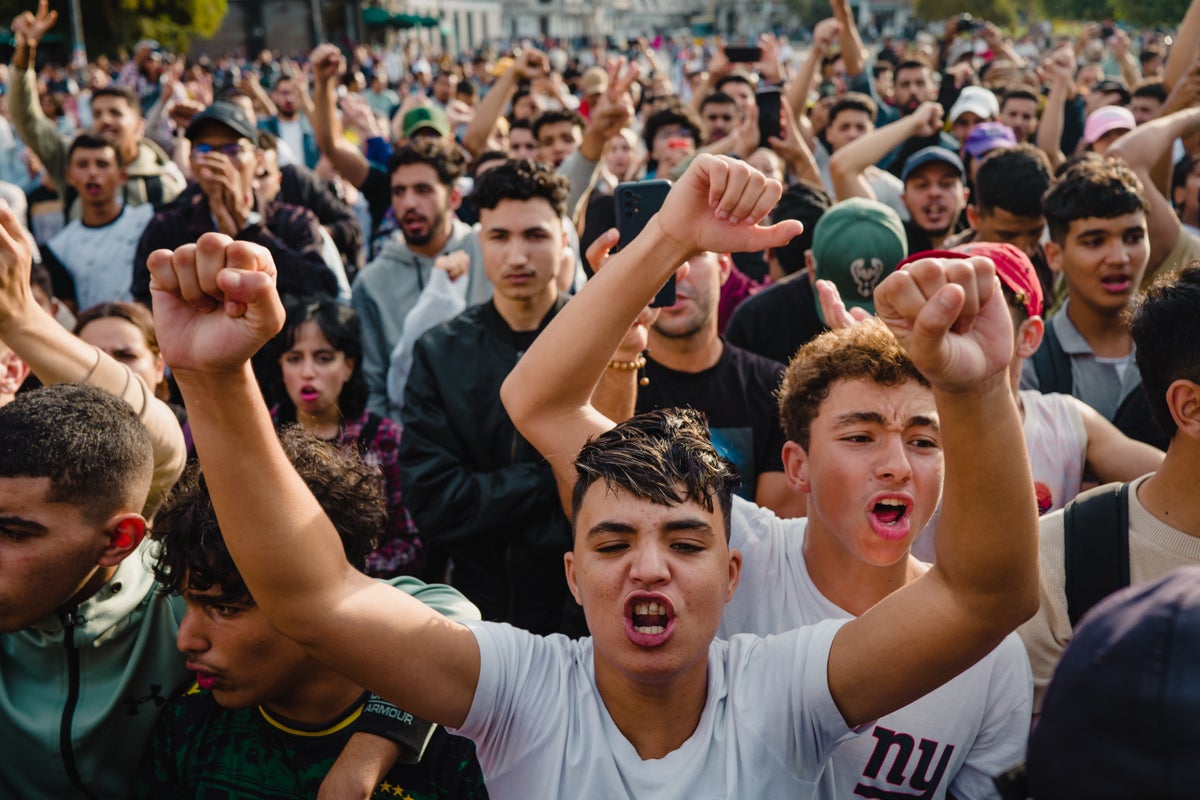
A new wave of global protests, stretching from the Andes to the Himalayas, is being driven by a potent mix of generational discontent and the anger of young people.
This was starkly illustrated in Madagascar, where President Andry Rajoelina was forced from power and the country following a military mutiny. This culmination came after weeks of demonstrations spearheaded by young activists who identified themselves as “Gen Z Madagascar.”
The fury directed at the political establishment in the Indian Ocean island nation echoes similar recent uprisings across the world, including in Nepal, the Philippines, Indonesia, Kenya, Peru, and Morocco. These movements, while often triggered by specific grievances, are underpinned by long-simmering issues such as widening inequality, economic uncertainty, and the pervasive corruption and nepotism of leaders.
Crucially, these demonstrations share a common thread: they are largely leaderless and predominantly composed of young individuals who brand themselves as “Gen Z.” Defined as those born roughly between 1996 and 2010, this generation is unique as the first to have matured entirely within the internet age.
“What connects these youth-led protests is a shared sense that traditional political systems aren’t responsive to their generation’s concerns, whether that’s corruption, climate change, or economic inequality. Protest then becomes the logical outlet when institutional channels feel blocked,” said Sam Nadel, director of Social Change Lab, a U.K.-based nonprofit that researches protests and social movements.
Though their specific demands differ, most of these protests have been sparked by government overreach or neglect. Some have also confronted harsh treatment by security forces and brutal repression.
In Morocco, a leaderless collective called Gen Z 212 — named after Morocco’s dialing code — has taken to the streets to demand better public services and increased spending on health and education. In Peru, protests over a pension law exploded into broader demands, including action to tackle rising insecurity and widespread corruption in the government. In Indonesia, deadly protests have erupted over lawmakers’ perks and the cost of living, forcing the president to replace key economic and security ministers.
The most widely recognized movement to be dubbed as a “Gen Z” protest was a deadly uprising in Nepal that culminated with the resignation of the prime minister in September. Protesters drew inspiration from successful anti-government movements elsewhere in South Asia — Sri Lanka in 2022 and Bangladesh in 2024 — which led to the ouster of incumbent regimes.
In Madagascar in turn, protesters say they were particularly inspired by the movements in Nepal and Sri Lanka.
The protests began against regular water and electricity cuts but quickly morphed into wider discontent, as demonstrators called for the president and other ministers to step down. On Wednesday, Madagascar’s military coup leader said he is “taking the position of president.”
Uniting behind a manga pirate flag
Across multiple countries, a singular pop culture symbol has emerged: a black flag showing a grinning skull and crossbones wearing a straw hat. The flag comes from a cult Japanese manga and anime series called “One Piece,” which follows a crew of pirates as they take on corrupt governments.
In Nepal, protesters hung the same flag on the gates of the Singha Durbar, the seat of the Nepalese government, and on ministries, many of which were torched in protests. It was also hoisted by crowds in Indonesia, the Philippines, Morocco and Madagascar.
Last week in the Peruvian capital, Lima, 27-year-old electrician David Tafur stood with the same flag in San Martín Square, now the stage for weekly protests.
“We’re fighting the same battle — against corrupt officials who, in our case, are also killers,” he said, recalling that President Dina Boluarte’s government held on to power since December 2022 despite more than 500 protests and the deaths of 50 civilians.
“In my case, it’s outrage over abuse of power, corruption, the deaths,” Tafur said, referring to the sharp rise in murders and extortion plaguing the South American country since 2017, amid new laws that have weakened efforts to fight crime.
Boluarte had been under investigation for months over various allegations including bribery and involvement in a deadly crackdown on protesters in 2022. She was replaced last week by interim President José Jerí.
Tafur said that wasn’t enough.
“The president is an ally of Congress and has to go,” he said.
Many significant protests in the past, like Occupy Wall Street in 2011, the Arab Spring between 2010 and 2012, and the 2014 Umbrella Revolution in Hong Kong, have been led by younger people. While they also used the internet and social media for mass mobilization, the “Gen Z” protesters are taking it to another level.
“Digital platforms are powerful tools for information sharing and building connections, but the most effective movements often combine digital mobilization with traditional in-person organizing, as we’ve seen in these recent protests,” said Nadel from Social Change Lab.
Days before the deadly protests began in Nepal, the government announced a ban on most social media platforms for not complying with a registration deadline. Many young Nepalese viewed it as an attempt to silence them and began accessing social media sites through virtual private networks to evade detection.
Over the next few days, they used TikTok, Instagram and X to spotlight the lavish lifestyles of politicians’ children, highlighting disparities between Nepal’s rich and poor, and announce planned rallies and venues. Later, some of them also used the gaming chat platform Discord to suggest who to nominate as an interim leader for the country.
“Whatever movement happens, whether against corruption or injustice, it spreads through digital media. The same happened in Nepal. The changes that took place after the Gen Z protests in Nepal spread globally through digital platforms, influencing other countries as well,” said protester Yujan Rajbhandari.
He said the protests in Nepal awakened not only the youth but also other generations.
“We realized that we are global citizens and the digital space connects us all and plays a powerful role across the world,” Rajbhandari said.
